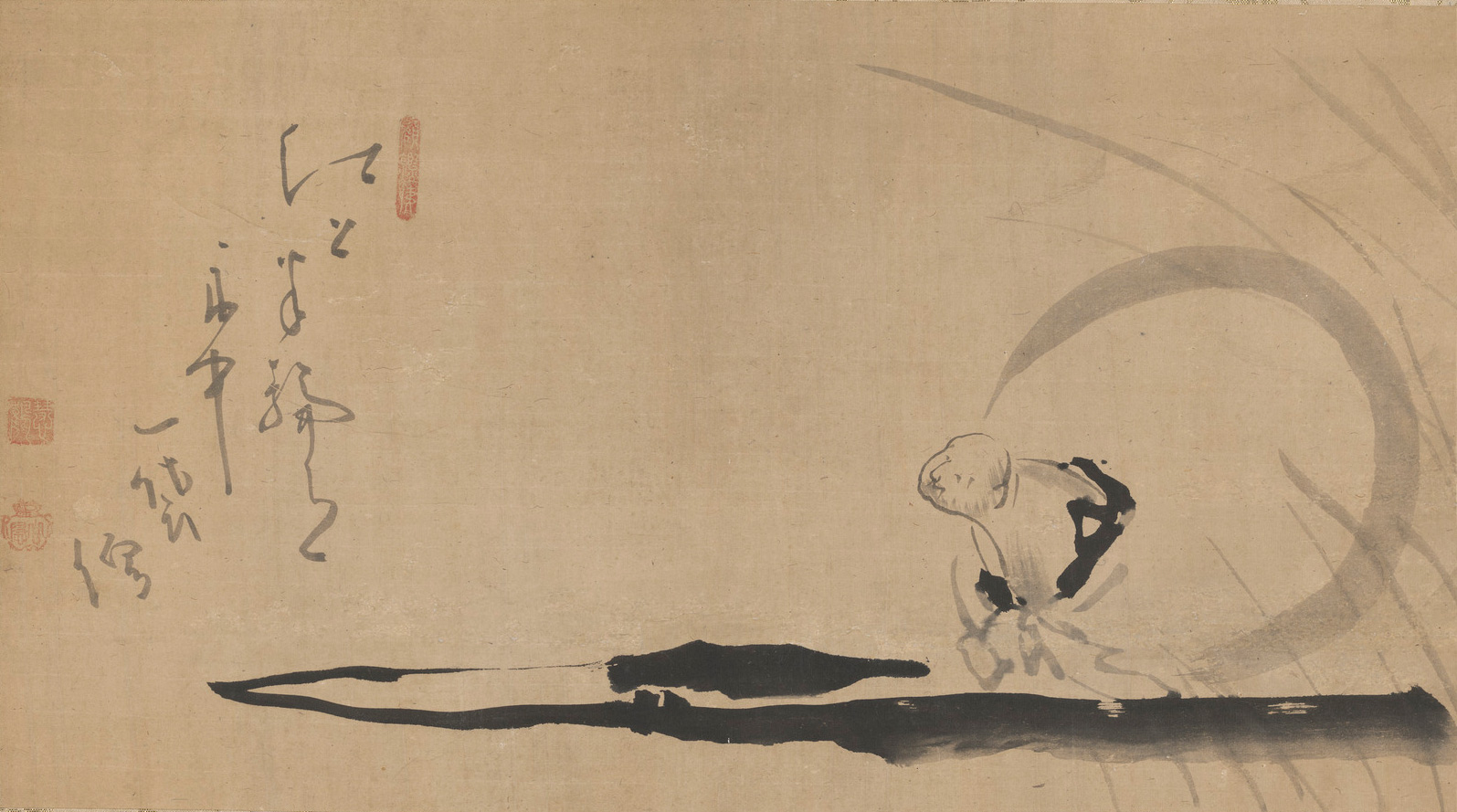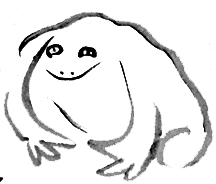The Buddha meditated for six years, Bodhidharma for nine. The practice of meditation is not a method for the attainment of realization – it is enlightenment itself.
Dogen Zenji
Most of us begin Zen practice because we would like to come to the experience of our own essential reality that Zen holds out to us; but we must remember, too, that if it’s true that right here and now “This very place is the Lotus Land, this very body the Buddha”, as Hakuin Zenji tells us, then every point on the path is the destination itself, if we can only open our eyes to it. And from this deeper point of view the function of zazen is the manifestation/expression of our Buddha Nature, not an attempt to attain what we already are.
That being so, sitting correctly is of utmost importance, and not just in theory; we find that it is in sitting “well”, i.e. in sitting with good posture and breath, that we readily move into the samadhi of Zen.
So let’s review.
Setting:
Pay some attention to the setting in which you are sitting. It should be clean and uncluttered, free of distractions. It may also have some items that express respect for your Zen practice: items like a candle, incense, a sculpture or painting of Buddha or Kanzeon, and so on. Or it may be nothing more than a bare wall if that’s what helps bring you into the appropriate mental and emotional space for zazen. Above all there should be a sense of clarity and order, free of distractions, whether visual or auditory.
Ritual:
When we enter the zendo, we bow. We bow again to our cushion, and again to the sangha, all before we sit down. When we sit at home, we should at least bow to our cushion, including in that one bow ourselves, our forebears in the Dharma, and all sentient beings.
We sit down, and it’s time to begin our zazen, the practice which Dogen tells us is the perfect expression of Buddha nature. So how do we do that well?
Posture:
A Zen master was asked what is the most important thing in doing zazen. He replied, “posture and breath”. He paused in thought for a moment, and then amended his answer: “Posture,” he said.
Why? The breath is the core of meditation practice, and proper breathing is difficult without good, erect posture. With it, proper breathing from the lower abdomen, slow and steady, comes very naturally.
What is proper posture? The back is straight, held up by a firm foundation of core muscles. Not ramrod straight, but with a gentle “S” curve, the shoulders back but relaxed and loose.
To arrive at this posture, gently rock forward and back, coming to a point of balance in the centre, then do the same from side to side. Do not neglect this little rocking ritual at the beginning of the sitting; it’s an important part of practice for three reasons. First, it’s important in finding your correct posture, the posture in which breath flows easily and attention naturally goes to the lower abdomen. Second, it’s important in engaging the core, which is the foundation supporting your straight back. And third, it’s important in bringing your conscious attention to the tanden, at the base of the abdomen.
With back straight, the core engaged in support, breathing from the lower abdomen, and attention naturally down in the tanden, we can move smoothly and easily into our Zen samadhi.
That said, we are all flawed human beings, and it may be that one’s particular flaw is of a physical sort that does not permit one to sit without some sort of support for the back, or forces one to sit in a chair. Simply do what you can. That will be enough.
Breath:
Once you’ve found your sitting posture, go through the breathing sequence. It goes like this: deep breath, hold, exhale to the bottom; deep inhalation through the mouth and long sighing exhalation through the mouth; three slow deep breaths through the nose, exhaling through the mouth; then settling into the steady breathing through the nose of zazen. This is not just “cleansing breath”; it’s also instrumental in bring conscious attention into the lower abdomen, and is the gateway into the steady, quiet breathing of Zen samadhi.
Sitting, rocking, breathing sequence, zazen: All Practice! All Enlightenment! All nothing at all.
Mudras:
A mudra is simply a bodily position which promotes or is conducive to Zen meditation, and which expresses its poise and dignity . Classically, each aspect of the lotus position is a mudra.
To begin with, the term “maha mudra”, or great mudra, refers to the position of the hands, the left hand resting on the right with the thumb tips touching lightly and making, with the hands below, the shape of an egg. In taking this mudra, be careful that you don’t let the thumbs drop down, thus collapsing the egg, and that you don’t let the whole mudra drift into lop-sidedness. The position of the “egg” is roughly just in front of the tanden, with the thumbs at or a little below the navel.
When sitting in the full lotus position, the legs form an important mudra, with the right foot on the left thigh and the left foot over top of it on the right thigh. With the knees on the zabuton or matt, and the buttocks on the front of your zafu or sitting cushion, you have a very stable pyramidal base, and maximum support for the back. Moreover, in this classic position, the left side of the body, the intuitive side controlled by the right brain, dominates the more logical, rational, right side, controlled by the left brain, and the heels make a convenient resting spot for the maha mudra.
Though this is the ideal position for zazen, few of us Westerners are able to take it, so let’s look at some other positions. First comes the modified lotus position, with feet on the calves rather than the thighs. And then, of course, the half lotus, with one foot up and the other down. Theoretically, the one foot that is up should be the left foot on the right thigh, again to express the repression of the logical and dualistic by the intuitive; however, in practice most people alternate according to the demands of their knees.
The Burmese position is much like the lotus position, but while the knees rest on the floor, the lower legs lie on the floor, one in front of the other.
“Seiza” means, literally, “correct sitting”, and is the traditional, formal position taken by host and guest in a Japanese home. It is a kneeling position in which one sits back on one’s lower legs and heels. Especially for us, this is a very difficult position to hold for any length of time, but fortunately in zazen there are a few ways of making it bearable and even comfortable. The first is to simply turn your cushion on its edge, put it between your legs and under your buttocks, and sit. The second (and preferable) way, is to buy or build a sitting bench. Seiza with a bench is very stable, and provides excellent support for the back. Unlike the full lotus, it does not provide the convenience of your heels as a resting place for your maha mudra, but you can use a small cushion resting on your thighs for this purpose.
Finally, and unavoidably for some of us aged ones, there is the chair. When using a chair, first of all choose the right one. It should be quite flat, not sloping rearward (as so many chairs do in order to tilt you into resting on the chair’s back). If you can find one high enough to allow your thighs to slope slightly downwards you will find it much easier on your back. A height-adjustable studio chair is ideal, but if the only chair available to you is too low for proper sitting, try putting a zafu (sitting cushion) on it.
It’s important for stability to keep your feet flat on the floor. You’ve seen Egyptian statues of seated kings and queens: perfectly solid and stable, feet firmly on the floor. Let them be your model (though not quite so stiff!). Again, to avoid strain on your arms, set a small cushion on your thighs as a resting place for your hands. Of course, if this position proves a strain on your back, then use some support. A cushion between your back and the back of the chair works well. The important thing is not to slump. Your head should float free above your spine, which is to say the crown of your head is high, and your chin is slightly tucked.
The last mudra to be dealt with involves the mouth, tongue and teeth. Your mouth should be closed as you breathe through your nose, with your teeth lightly touching or only slightly apart, and your tongue pressing lightly against the roof of your mouth. This is important as it closes your “ki” energy circuit. In Japanese the power that is thus gathered is called jôriki, literally the power of Mind.
Remember, you’re breathing from your lower abdomen, and that is where your focus is. If you’re doing Mu, that is where Mu is centered. Sometimes, especially in sesshin, we may find ourselves so taken up with our practice of Mu that our tongue, lips and mouth are actually moving, and we are all but saying it aloud. This is perfectly fine, of course, but it also can happen that the moving of mouth and tongue, far from accompanying a new, higher intensity of practice, is happening because your Mu has become too “heady”, too superficial, and you need to recall it down into your abdomen.
In the samadhi of Zen you will find eventually that while Mu is based in your tanden, at the same time it pervades your entire being. When you and Mu are one, it will be Mu brushing your teeth, tying your shoe lace, taking a walk, etc. Please keep your teacher informed of any such developments in your practice.

